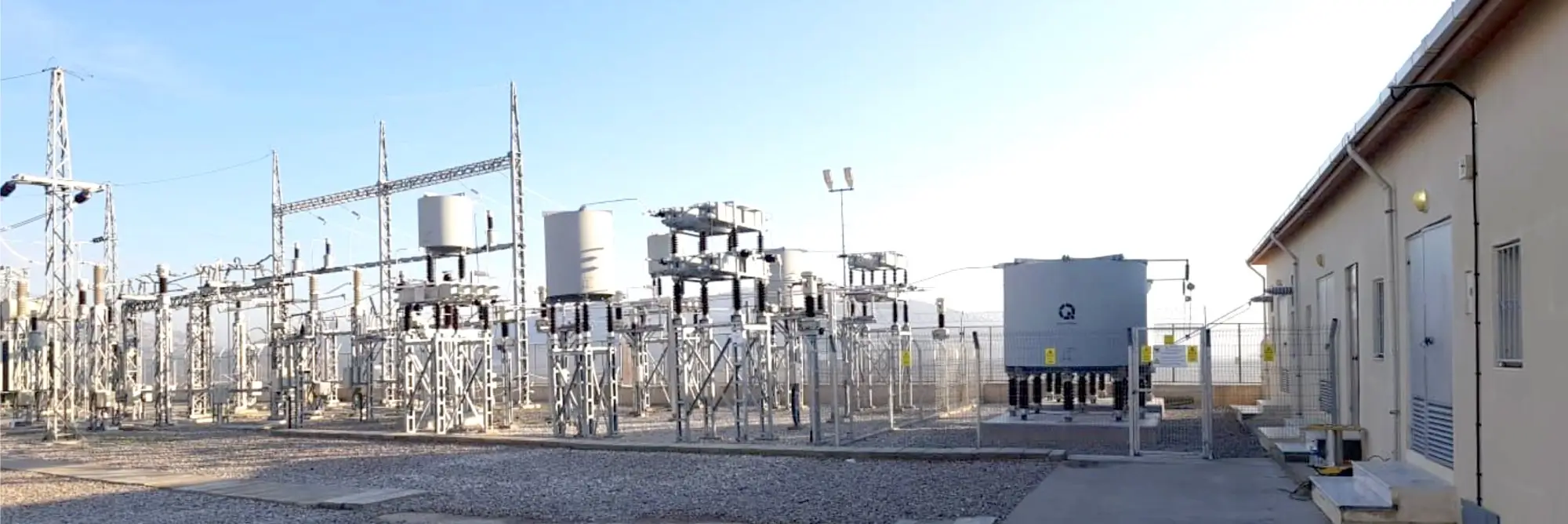
Reactors > FACTS / HVDC
Phase Reactors
Comprehensive Overview: Phase Reactors in Power Systems
Phase reactors, also known as series reactors, are critical components in electrical power systems, connected in series with transmission or distribution lines. These reactors serve multiple essential functions, particularly in fault current limitation and system stability. This detailed summary explores the functionality, design, applications, and benefits of phase reactors, with a focus on their role in reducing fault levels and enhancing overall system performance.
Functionality and Operation of Phase Reactors:
Phase reactors are primarily designed to reduce the fault level at the output of the reactor to a desirable level. By introducing inductance into the circuit, these reactors limit the rate of current increase during fault conditions, thereby protecting the system from excessive fault currents. This is particularly crucial in maintaining the integrity of power systems and ensuring the protection of equipment.
1 Fault Current Limitation:
- Current Limitation: During fault conditions, phase reactors limit the magnitude of fault currents, reducing the potential for damage to transformers, circuit breakers, and other critical infrastructure.
- Controlled Impedance: By introducing controlled impedance into the circuit, phase reactors help in managing and mitigating the effects of short circuits and other fault conditions.
2 Continuous Current Carrying:
- Normal Operation: Phase reactors carry continuous current during normal operation, and hence, power loss is a significant consideration in their design and application. Ensuring low power loss is essential to maintain efficiency and reduce operational costs.
Design and Types of Phase Reactors:
The design of phase reactors is focused on achieving high efficiency and reliability while minimizing power losses. Dry type air core reactors are particularly preferred for this application due to their high-quality factor (Q factor) and low loss characteristics.
1 Dry Type Air Core Reactors:
- High Q Factor: These reactors are designed with a high Q factor, which indicates a low level of energy loss relative to the amount of energy stored. This makes them highly efficient and effective in limiting fault currents.
- No Magnetic Core:No Magnetic Core: As they do not have a magnetic core, air core reactors avoid issues related to core saturation and hysteresis losses, further enhancing their efficiency.
2 Low Loss Design:
- Energy Efficiency: Low loss reactors are designed to minimize power losses during normal operation, which is critical for long-term operational efficiency. Over the lifespan of the equipment, reduced power losses translate to substantial cost savings for the customer.
Applications and Benefits:
Phase reactors find extensive applications in both transmission and distribution networks, providing critical benefits in terms of fault current limitation, system stability, and overall efficiency.
1 Transmission and Distribution Networks:
- System Protection: In high voltage transmission networks, phase reactors protect transformers, switchgear, and other critical components from the detrimental effects of fault currents.
- Voltage Regulation: By managing impedance, phase reactors contribute to maintaining voltage stability and improving power quality in the distribution network.
2 Enhanced System Stability:
- Oscillation Damping: Phase reactors help in damping power oscillations, thereby enhancing the stability and reliability of the power system. This is particularly important in systems with long transmission lines where oscillations can be more pronounced.
- Transient Response Improvement: By limiting the rate of current rise during faults, phase reactors improve the transient response of the power system, ensuring quicker stabilization and reduced risk of cascading failures.
3 Operational Efficiency:
- Long-Term Cost Savings: Low loss phase reactors contribute to significant cost savings over the lifespan of the equipment by reducing continuous operational losses. This makes them a cost-effective solution for power utilities.
- Maintenance and Reliability: The robust design of dry type air core reactors ensures high reliability and minimal maintenance requirements, further enhancing their appeal for long-term deployment in power systems.
Technical Considerations:
When selecting and implementing phase reactors, several technical considerations must be taken into account to ensure optimal performance and integration with the power system.
1 Impedance Specification:
- Customized Design: The impedance of the phase reactor must be carefully specified based on the requirements of the power system, including the desired level of fault current limitation and voltage regulation.
2 Thermal Management:
- Heat Dissipation: Effective thermal management is crucial to prevent overheating and ensure the reliable operation of phase reactors, especially during fault conditions when current levels can be significantly higher.
3 Installation and Integration:
- System Compatibility: Phase reactors must be compatible with existing infrastructure and protection schemes. Proper installation and integration are essential to maximize their effectiveness and reliability.


